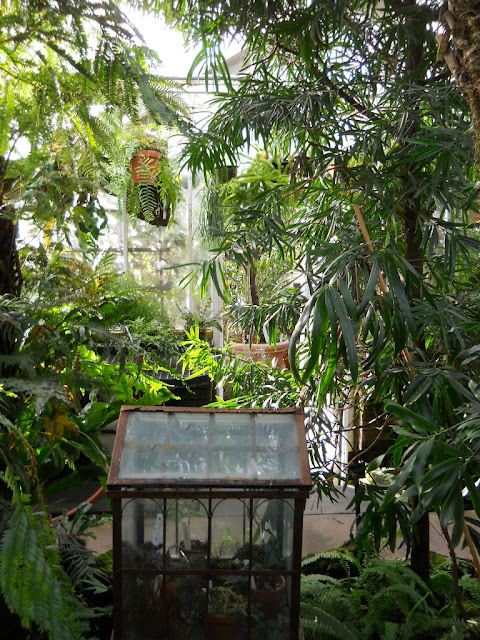I recently visited the Smith College Botanical Greenhouses. The core greenhouses were built in 1895 which means that they are beautiful, old, and charming. Built on brick foundations, ferns and mosses live in the cracks of the mortar and a there is a carpet of escaped plants as ground cover under the benches. Some of the plants appear just as old, with gnarly trunks, their limbs and leaves working hard to escape through the glass roof. I like going to these places because at every turn I encounter hundreds of plants I have never seen before. It is like walking through a plant encyclopedia. It the middle of winter is is nice to feel the warm, humid air and breathe in the rich scent of plants and earth.
Above: in the cactus house I found a nice collection of Haworthia, this one is H. truncata (meaning ending very abruptly). Vertical cleaved pieces, like rocks left from another age!
Lithops hookeri var. Lutea
The Lithops, or Living Stones, are marvelous creatures- it is hard to believe that they are plants and not rocks or sea creatures or strange amphibians.
Salvia sagittata
Blue flowers are uncommon and highly revered. There are few flowers out there with such an intense, pure, and royal blue. This Arrow Leaf Sage (saggitatta, meaning arrow-shaped) had a few early blooms that stood out brightly against the lush greenery. This sage, native to Chile and Peru, grows at high altitudes (10,000 feet), but will survive well in zone 8-11 gardens, provided it is given full sun, great drainage, and fertile soil.
Osmanthus fragrans
When I was at Hidcote last March, there was an old Osmanthus tree in full bloom. Delicate yellow flowers filled the air with a sweet, lemony fragrance. I was unable to procure the name of the specimen at Hidcote, but I was told that Lawrence Johnston brought it back from one of his plant expeditions. Osmanthus fragrans is native to the Himalayas, where Johnston spent some time plant hunting. Similar, if not the same species, this flower's scent brought me back to another time and place.
A view of a terrarium nestled in the fern house.
Heliconia vellerigera
This is a very unusual plant, its leaves are dark maroon and similar to a banana, it is very tall, and has a long, hanging fuzzy flower stalk. At Smith, this Heliconia was blooming for the first time in ten years.
Nearly all the Paphiopedilum orchids were blooming and I thought this one was unusually striking. There was a tag telling us that the label was lost.
Dicksonia antarctica
Considered the largest and most hardy tree fern, tolerating temperatures to around 25 degrees. Clearly an old specimen with its massive moss covered trunk and towering height.
Clivia caulescens
Hoya diptera
A fairly common houseplant, its flowers always amaze me.










Wonderful post and photos, Helen! I could practically smell all the greenery!--Joe
ReplyDelete